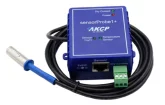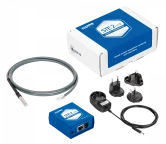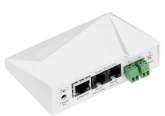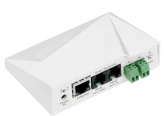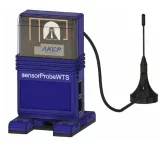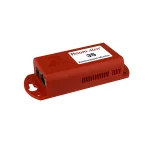We provide a complete installation and commissioning service for the environment monitoring solutions we supply. Please contact us for a site specific quotation.
Laboratory Environmental Monitoring
Environmental monitoring is an essential component of laboratory operations, especially when it comes to research, testing, or manufacturing environments where precision, control, and reliability are of paramount importance. The integrity of the data, safety of personnel, and quality of research or products depend heavily on maintaining optimal environmental conditions. At Server Room Environments we supply and install advanced environmental monitoring solutions, included hardwired and wireless devices, to help laboratories monitor their environments in real time. Our products include a range of base environment monitors to which plug-in and wireless sensors can be connected to monitor for over 30 different factors, with digital inputs for third party systems and digital outputs to trigger actions as required.
-
Applications (40)
- Temperature & Humidity (30)
- Water Leakage Detection (26)
- Server Rack Monitoring (28)
- Hardwired Ethernet Devices (28)
- Wi-Fi Connectivity Units (8)
- Wireless Devices (13)
- Narrowband IoT Devices (4)
- GSM / LTE Comms (7)
- Battery Monitoring (7)
- Power Monitors (28)
- Security Monitors (26)
- Branch Circuits (2)
- Data Centres (7)
- Data Loggers (11)
- Data Aquisition Systems (11)
- Laboratories (18)
- Pharmaceutical (18)
- Accessories (159)
The Importance of Environmental Monitoring in Laboratories
Laboratories, whether for research, testing, or manufacturing, rely on highly controlled environments to ensure accuracy, safety, and quality. Factors such as temperature, humidity, air quality, light levels, and even the presence of gases and particulates must be monitored and maintained within specific ranges. When these environmental parameters fluctuate beyond permissible thresholds, they can lead to equipment malfunction, erroneous test results, compromised research outcomes, and potential health risks for personnel.
For instance, temperature and humidity are critical in experiments involving chemical reactions, biological samples, or sensitive materials like pharmaceuticals. Even minor variations can lead to false readings, degradation of substances, or unsafe working conditions. Similarly, particulate levels, such as dust or chemical vapors, can pose risks to both the samples and laboratory workers. Therefore, having an effective environmental monitoring system is crucial to ensuring the reliability and safety of laboratory operations.
Environmental monitoring can also be a regulatory requirement in certain industries, including pharmaceuticals, food testing, and healthcare. Regulatory bodies often mandate continuous monitoring of environmental conditions to ensure compliance with quality standards and to guarantee the safety of workers and the integrity of the products being developed.
Key Monitoring Devices and Sensors for Environmental Monitoring in Laboratories
Server Room Environments supplies a wide range of monitoring devices and sensors that are designed to maintain and track environmental conditions in a laboratory. Our systems are highly configurable and can meet the specific needs of a wide range of laboratory environments. Below are some of the key devices commonly used in laboratories for environmental monitoring:
- Environment Monitor Base Units: devices such as the HW group Perseus 140 or AKCP SensorProbe SP2+ are versatile monitoring devices designed to manage environmental monitoring through wired sensors. They can monitor parameters such as temperature, humidity, airflow, and power usage. For example, in a laboratory setting where temperature-sensitive samples or reagents are stored, the devices can monitor temperature conditions and provide instant notifications if conditions fall outside safe ranges. The solutions provide laboratory managers with peace of mind, knowing that they can monitor conditions even when not physically present in the lab. An additional consideration would be access control and the AKCP solution can include access control to restricted areas and cabinets.
- Temperature and Humidity Sensors: temperature and humidity are two of the most critical parameters in laboratory environments. Our temperature and humidity sensors are accurate, reliable, and designed to withstand a wide range of conditions and include NIST2 and NIST3 certified sensors. The sensors connect to an monitoring base unit and can be integrated into a broader monitoring system for continuous real-time data collection. Alerts are automatically triggered if the temperature or humidity goes outside pre-set thresholds, which can be critical for labs that handle biological samples, chemicals, or sensitive equipment.
- Airflow Sensors: proper airflow is vital in laboratory environments, especially in cleanrooms, biological labs, or areas where certain chemicals are being handled. Our airflow sensors help to monitor the direction and speed of airflow, ensuring that air circulation meets the required specifications. If airflow deviates from the set parameters, the system sends out immediate alerts, enabling quick intervention to prevent contamination, hazardous exposure, or equipment damage. Airflow is also a measure of the cooling in operation and can be used to indicate a failed or poorly performing air conditioner.
- Water Leak Detection Sensors: in laboratories, water leaks can be catastrophic. Whether it is from a broken pipe, an overfilled container, or accidental spillage, water can damage equipment, materials, and even disrupt ongoing experiments. Our water leak detection sensors are designed to alert users in real time when water is detected in sensitive areas. These sensors can be placed near critical infrastructure, such as sensitive equipment or chemical storage areas, to prevent costly damage and reduce the risk of downtime.
- Power Monitoring Sensors: power interruptions can severely affect laboratory operations, leading to data loss, equipment damage, or halted experiments. Our power monitoring sensors are designed to track the power status and performance of laboratory equipment. These sensors provide real-time visibility into power usage, helping laboratory managers identify potential issues, such as power fluctuations, outages, or excess consumption, which could impact environmental stability.
- Environmental Monitoring Software: environmental monitoring system software collates and consolidates data from all the connected sensors and detectors. The software allows users to view real-time data, generate reports, and set up custom alerts. It provides laboratory managers with the insights they need to take proactive measures, ensuring that conditions remain within desired thresholds. The software also facilitates compliance with industry regulations by generating audit-ready reports and maintaining a complete history of environmental conditions.
The Benefits of Environmental Monitoring Systems for Laboratories
- Real-time Monitoring and Alerts: one of the key advantages of our systems is their ability to provide real-time monitoring and alerts. Laboratory managers can receive immediate notifications via email, SMS, or system alerts if environmental conditions deviate from preset limits. This allows for quick intervention and prevents potential problems before they escalate.
- Compliance with Regulatory Standards: many laboratories are required to meet stringent regulatory standards, especially in industries such as pharmaceuticals, biotechnology, and food testing. Our devices help laboratories comply with these regulations by ensuring that environmental conditions are consistently within the required ranges. The ability to log data and generate reports further aids in meeting compliance requirements.
- Improved Lab Safety Monitoring: environmental conditions not only improves the accuracy of experiments but also enhances safety. For example, continuous monitoring of air quality and chemical vapors can prevent exposure to harmful substances, while temperature and humidity control helps ensure that sensitive materials are stored safely
- Cost Savings: by preventing environmental deviations and reducing equipment downtime, our environmental monitoring systems help laboratories reduce costs associated with repairs, replacements, or regulatory fines. Moreover, optimizing conditions leads to more efficient operations and better resource management.
- Data Logging and Reporting: continuous data logging ensures that all environmental data is captured, providing a valuable historical record for future reference or audits. Reports can be generated for compliance purposes or used to analyze trends, helping lab managers make informed decisions.
Environmental monitoring is a critical aspect of laboratory management. With our advanced monitoring systems, laboratories can ensure that they maintain optimal environmental conditions, adhere to regulatory requirements, improve safety, and reduce costs. By utilising our environment monitors and plug-in temperature and humidity sensors, airflow sensors, and water leak detectors, laboratory managers can achieve a comprehensive and reliable monitoring solution that provides real-time data, automated alerts, and detailed reports. As laboratories continue to evolve and face new challenges, our technology stands as a vital tool for ensuring environmental control, safety, and operational excellence.
Please contact our Projects Team for more information on the range of laboratory environmental monitoring systems we supply along with our installation and calibration services.

Earn SRE points on all online purchases with double points on selected products



























